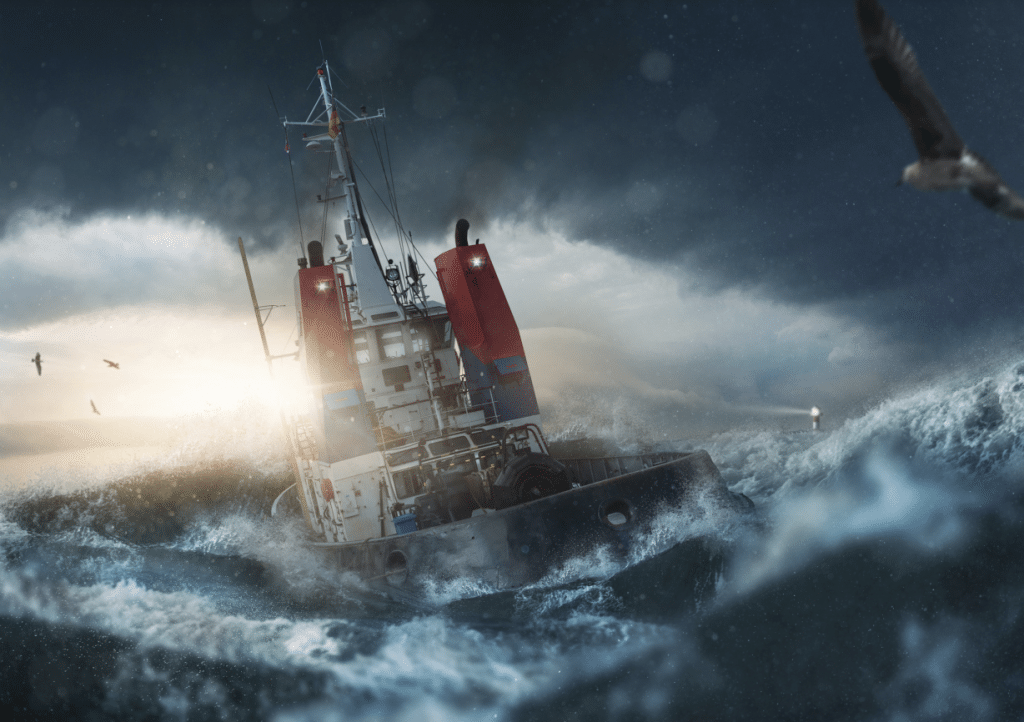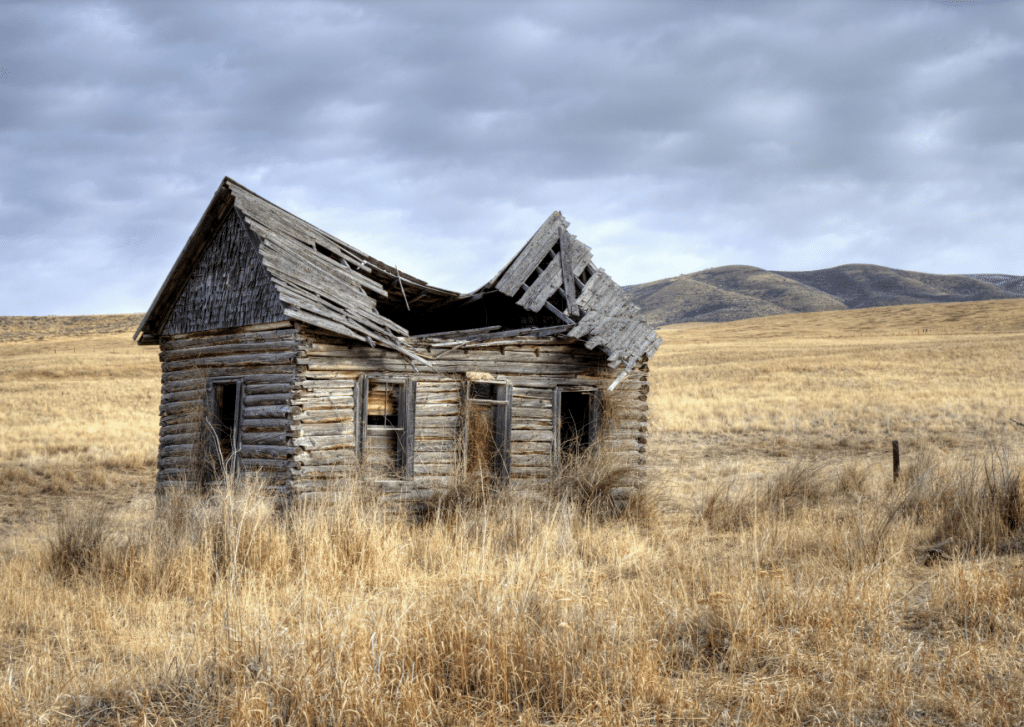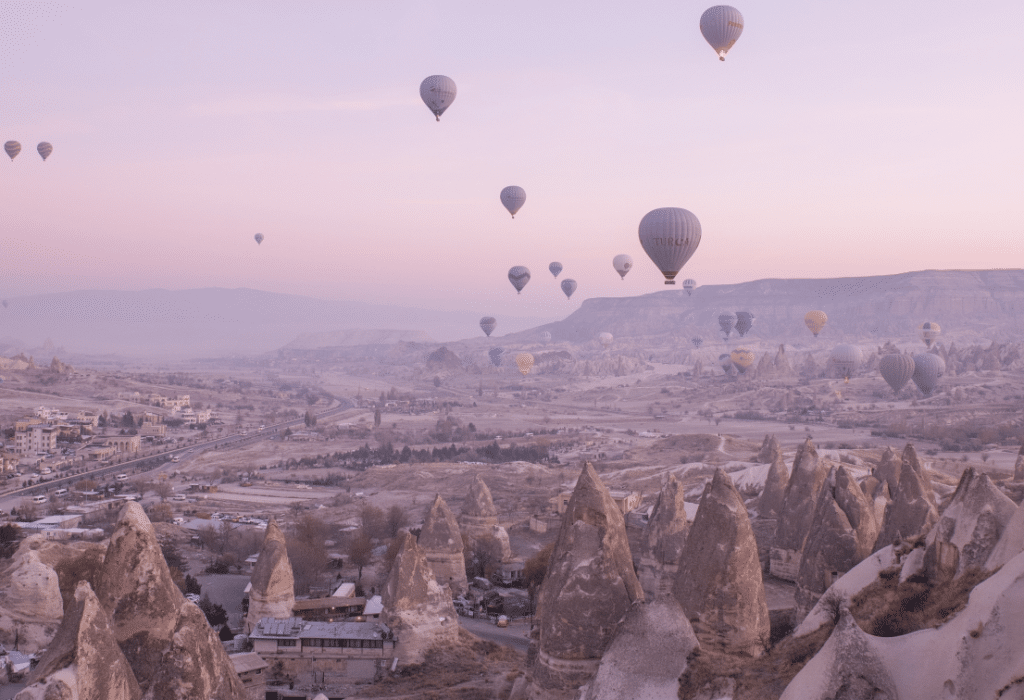First understand your difficult emotions
The first step in growing the ability to be with our difficult emotions is to understand them. Befriending these emotions means first to get to know our autonomic states (i.e. whatever is going on in our brain/nervous system and body right now). Secondly, the actual emotions arising from these states. It helps if we identify individual aspects of each autonomic state: what are they like?
To make this easier we can imagine them as inner landscapes. While examining them we activate and maintain curiosity. When curious, the compassion circuit of our brain switches on instead of the harsh, judgmental survival one.
People describe their inner landscapes as ‘cyclone’ or a ‘peak of a mountain with trees’. Others may see it as a ‘meadow with tiny flowers dotted around’.
Our emotions and inner landscapes
The Polyvagal Theory states that our Autonomic Nervous System (ANS) constantly scans our inner and outer environment for cues of safety and signs of danger. This continuous scanning happens under our conscious awareness. It ensures that if danger is detected self-protective measures, known as the threat-response, are applied within a split second.
As a result, our nervous system is always in one of three states or landscapes. However, we don’t choose which one we’re in to start with. Our nervous system makes this decision to ensure survival and it can take us out of one state and into another whether or not we want it.
The good news is that we can learn to recognise where we are at any given moment. Then we can make a conscious decision to move to a state/landscape that feels more comfortable. Using descriptive words to paint a picture of the landscapes in details can help us befriend them.
Here is the list of the landscapes and the feelings associated with each. Although it’s a long list, I encourage you to develop your own colours and flavours when describing your landscapes.
The hierarchy of the landscapes
The landscape of Safety
The top landscape is where good things happen. We feel safe here, open and ready to engage with others. You may imagine your top landscape as the vast blue sky or, a mountain peak with vistas…

Let’s describe the feelings and emotions typically associated with being here:
Awesome, Affectionate, Appreciative, Authentic, Benevolent, Blissful, Courageous, Compassionate, Confident, Calm, Curious, Comfortable, Connected, Clearheaded, Devoted, Delighted, Eloquent, Empowered, Enthusiastic, Encouraged, Empathetic, Free, Fulfilled, Friendly, Fascinated, Grateful, Glad, Happy, Hopeful, Interested, Intrigued, Involved, Invigorated, Joyful, Kind, Loving, Lively, Mellow, Musing, Mindful, Nice, Noticing, Open, Optimistic, Playful, Proud, Patient, Pleased, Puzzled, Passionate, Quiet, Relaxed, Resourced, Radiant, Rested, Restored, Reinvigorated, Rejuvenated, Revived, Skilled, Stimulated, Sympathetic, Serene, Safe, Secure, Still, Satisfied, Soothed, Trusting, Tranquil, Tickled, Truthful, Thankful, Touched, Uplifted, Unassuming, Upbeat, Vibrant, Vulnerable, Warm, Whole, Wonderful, Wondrous, eXtraordinary, Yes!, in the Zone.
The landscape of Danger

The next landscape feels energy-filled or supercharged. We’re here because we’re driven to achieve something. Or perhaps we sense danger and our bodies start to prepare us to act immediately on strategies of survival. It may look as a storm, a war zone, or a messy house…
Let’s describe the feelings and the mostly – but not necessarily – difficult emotions typical here:
Alarmed, Afraid, Apprehensive, Angry, Anxious, Annoyed, Aggravated, Agitated, Anguished, Buzzing, Bewildered, Claustrophobic, Confused, Conflicted, Cranky, Critical, Deranged, Dismayed, Disgruntled, Displeased, Disgusted, Distressed, Distraught, Distracted, Envious, Embarrassed, Exasperated, Frightened, Furious, Frustrated, Flustered, Fidgety, Frazzled, Grasping, Gasping, Harried, Hating, Horrified, Hostile, Irrational, Insecure, Irritated, Irritable, Indignant, Idiotic, Impatient, Irked, Judgmental, Jittery, Jealous, Knotted, Looping, Listless, Leery, Livid, Manic, Mistrustful, Miserable, Mimicked, Nasty, Nervous, Over-engaged, Overdoing, Pressured, Panicked, Petrified, Quick, Raging, Rattled, Repulsed, Shaky, Shocked, Startled, Surprised, Stressed out, Self-hating, Self-critical, Self-judgmental, Troubled, Turbulent, Uncomfortable, Upset, Unsettled, Unhappy, Uneasy, Vibrating, Worried, Wary, Weary, Wretched, eXtreme, Yearning, Yucky, Zigzagging.
The landscape of Life-threat

The landscape at the bottom of this hierarchy has low energy. This is where the freeze response takes us when our nervous system finds no other way to survive. ‘Fainting dead’ or ‘playing possum’ are other ways to think about it. The image of this could be a cave or an uninhabited island…
Let’s describe the main feelings and heavy emotions of this landscape:
Absent, Alienated, Apathetic, Blank, Bored, Burnt out, Collapsed, Cold, Despairing, Dreading, Detached, Distant, Discombobulated, Depleted, Devastated, Dejected, Despondent, Disheartened, Discouraged, Exhausted, Foggy, Forlorn, Fatigued, Grim, Grieved, Gloomy, Hopeless, Heartbroken, Haunted, Helpless, Impenetrable, Immobilised, Indifferent, Ignored, Intimidated, Judged, Joyless, Knocked out, Lost, Lethargic, Longing, Lonely, Missing, Murky, Mortified, Melancholic, Numb, Nerved out, Overwhelmed, Oppressed, Out of body, Pathetic, Paralysed, Queasy, Retracted, Removed, Resentful, Shutdown, Sleepy, Suppressed, Terrified, Torn, Tired, Unloved, Unreachable, Unresponsive, Unexpressive, Void, Without, Withdrawn, eXpressionless, Zoned out.
A short exercise to help befriend difficult emotions
- Name each Landscape.
e.g. Happy Days; Shattered Glass; Deserted Island - Every time you feel a shift in your state think of where you are. Then describe how exactly it is playing out in the very moment. Start with sensations inside the body, then go on to emotions. You can use the list of words above or find your own.
- Think what might help you most in this moment to step into the state/landscape of regulation, safety, possibilities and social engagement. It may be enough to think yourself there. Or you may want to move your body intuitively in ways that you would if you were there. E.g. gesturing a hug, swaying as if with a gentle breeze, smiling or singing, recalling the image of a person who cares for you etc. Alternatively you can reach out for someone to help you get there. Co-regulation is one of the best options to return to safety.



